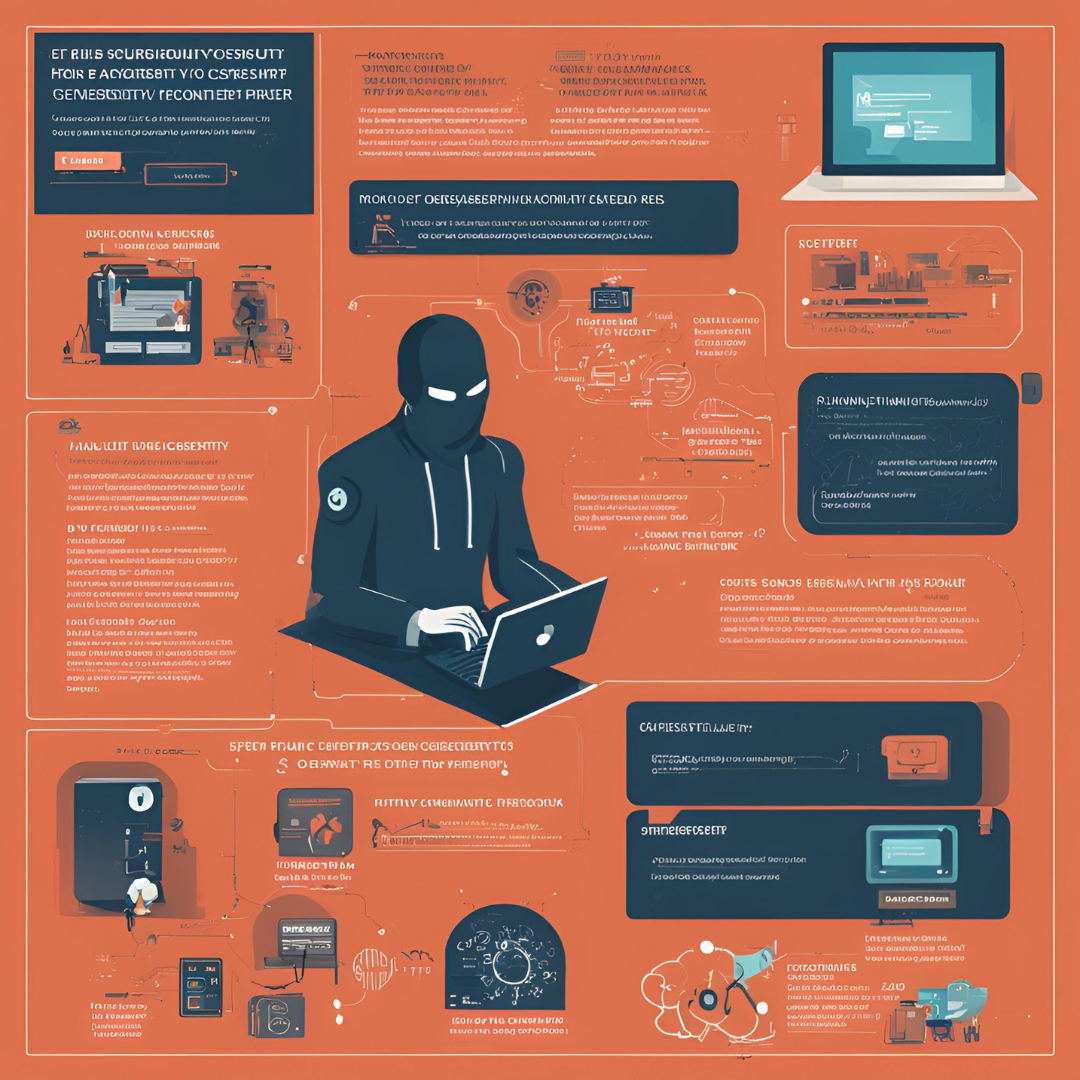Introduction:
In our modern, interconnected society, cybersecurity is a top priority for everyone, from individuals to corporations to government entities. As technology continues to advance and cyber threats become more prevalent, it is crucial to ensure the security of sensitive data and defend against malicious attacks. This extensive guide will examine the complexities of cybersecurity, including essential ideas, effective methods, and new developments, to assist you in navigating the intricate world of cyber threats and defenses.
The digital world has become an integral part of our lives, both personally and professionally. While technology has its advantages, it also poses a significant challenge in the form of cybersecurity threats. Protecting ourselves from online dangers, such as malware attacks and data breaches, is crucial. This post serves as a complete guide to cybersecurity, providing you with the necessary information and resources to navigate the digital landscape with confidence and safety.
Understanding Cybersecurity:
The protection of digital systems, networks, and data from cyberattacks and unauthorized access is the goal of cybersecurity. It entails the identification of security weaknesses, risk reduction, and the establishment of strong security measures to secure confidential data and guarantee the reliability, privacy, and accessibility of digital resources. In today's world, where cyber threats are always changing and becoming more advanced, cybersecurity is a critical component in defending the digital realm.
The Threat Landscape:
The world of cybersecurity is ever-changing, with hackers using a range of methods to take advantage of weaknesses in systems. There are many types of cyber threats, such as malware, ransomware, phishing, and social engineering, and they can cause serious harm to both individuals and companies. It is crucial to comprehend the nature of these threats and keep up-to-date with new developments to successfully manage risks and safeguard against possible attacks.
Best Practices for Cybersecurity:
Effective cybersecurity requires a multi-layered approach, incorporating a range of best practices and security controls to protect against a variety of threats. Some key best practices include:
-
Implementing Strong Password Policies: Encourage the use of complex passwords and multi-factor authentication to enhance security and prevent unauthorized access to accounts and systems.
-
Keeping Software and Systems Up to Date: Regularly update software, operating systems, and security patches to address vulnerabilities and protect against known exploits.
-
Educating Users: Provide cybersecurity awareness training to employees and end-users to help them recognize common threats such as phishing scams, malware, and social engineering attacks.
-
Securing Network Perimeters: Deploy firewalls, intrusion detection systems, and other network security measures to monitor and control incoming and outgoing traffic and prevent unauthorized access to networks.
-
Encrypting Sensitive Data: Use encryption to protect sensitive data both in transit and at rest, reducing the risk of data breaches and unauthorized access.
-
Implementing Access Controls: Limit access to sensitive information and systems based on the principle of least privilege, ensuring that users only have access to the resources necessary to perform their duties.
-
Backing Up Data Regularly: Implement regular data backups to ensure that critical information can be restored in the event of a data loss incident or ransomware attack.
Emerging Trends in Cybersecurity:
As technology continues to evolve, so too do the tactics and techniques employed by cybercriminals. Some emerging trends in cybersecurity include:
-
Artificial Intelligence and Machine Learning: AI and machine learning technologies are being increasingly used to detect and respond to cyber threats in real-time, enabling organizations to automate threat detection and response processes.
-
Zero Trust Security: Zero trust security models are gaining traction as organizations move away from traditional perimeter-based security approaches towards a more granular and adaptive approach to access control and authentication.
-
Cloud Security: As more organizations adopt cloud computing services, ensuring the security of cloud-based environments has become a top priority. Cloud security solutions such as cloud access security brokers (CASBs) and cloud security posture management (CSPM) tools are being used to secure cloud workloads and data.
-
Endpoint Security: With the rise of remote work and the proliferation of connected devices, endpoint security has become increasingly important. Endpoint detection and response (EDR) solutions are being used to monitor and secure endpoints against advanced threats and malware.
Understanding the Threats:
- Malware: Malicious software like viruses, worms, and ransomware can infect your devices, steal data, or disrupt operations.
- Phishing: Deceptive emails or messages designed to trick you into revealing sensitive information like passwords or credit card details.
- Social Engineering: Manipulative tactics used by attackers to gain your trust and access to your data or systems.
- Cyberattacks: Intentional attempts to disable or disrupt computer systems or networks, often motivated by financial gain or espionage.
Building Your Digital Defense:
- Strong Passwords and Password Management: Create unique and complex passwords for all your online accounts. Consider using a password manager to securely store and manage your credentials.
- Software Updates: Always update your operating systems, applications, and firmware to the latest versions. These updates often include security patches that address vulnerabilities.
- Two-Factor Authentication (2FA): Enable 2FA whenever possible. This adds an extra layer of security by requiring a second verification code in addition to your password when logging in.
- Beware of Phishing Attempts: Be cautious of unsolicited emails, text messages, or social media posts. Don't click on suspicious links or attachments, and verify the sender's legitimacy before responding.
- Data Backups: Regularly back up your important data to an external device or cloud storage service. This ensures you can recover your data in case of a cyberattack or hardware failure.
- Antivirus and Anti-malware Software: Install reputable antivirus and anti-malware software and keep it updated. These programs can help detect and prevent malware infections.
- Secure Your Wi-Fi Network: Use a strong password for your Wi-Fi network and enable WPA2 encryption to protect your connection from unauthorized access.
- Be Wary of Public Wi-Fi: Avoid conducting sensitive activities like online banking on public Wi-Fi networks. If necessary, consider using a virtual private network (VPN) for added security.
Conclusion:
To sum up, safeguarding our digital infrastructure through cybersecurity is of utmost importance. It shields us from various cyber threats and preserves the reliability, secrecy, and accessibility of our digital possessions. One can effectively manage risks and prevent attacks by comprehending the nature of cyber threats, adopting optimal protocols, and keeping abreast of emerging trends - both individuals and organizations.





Leave a Reply